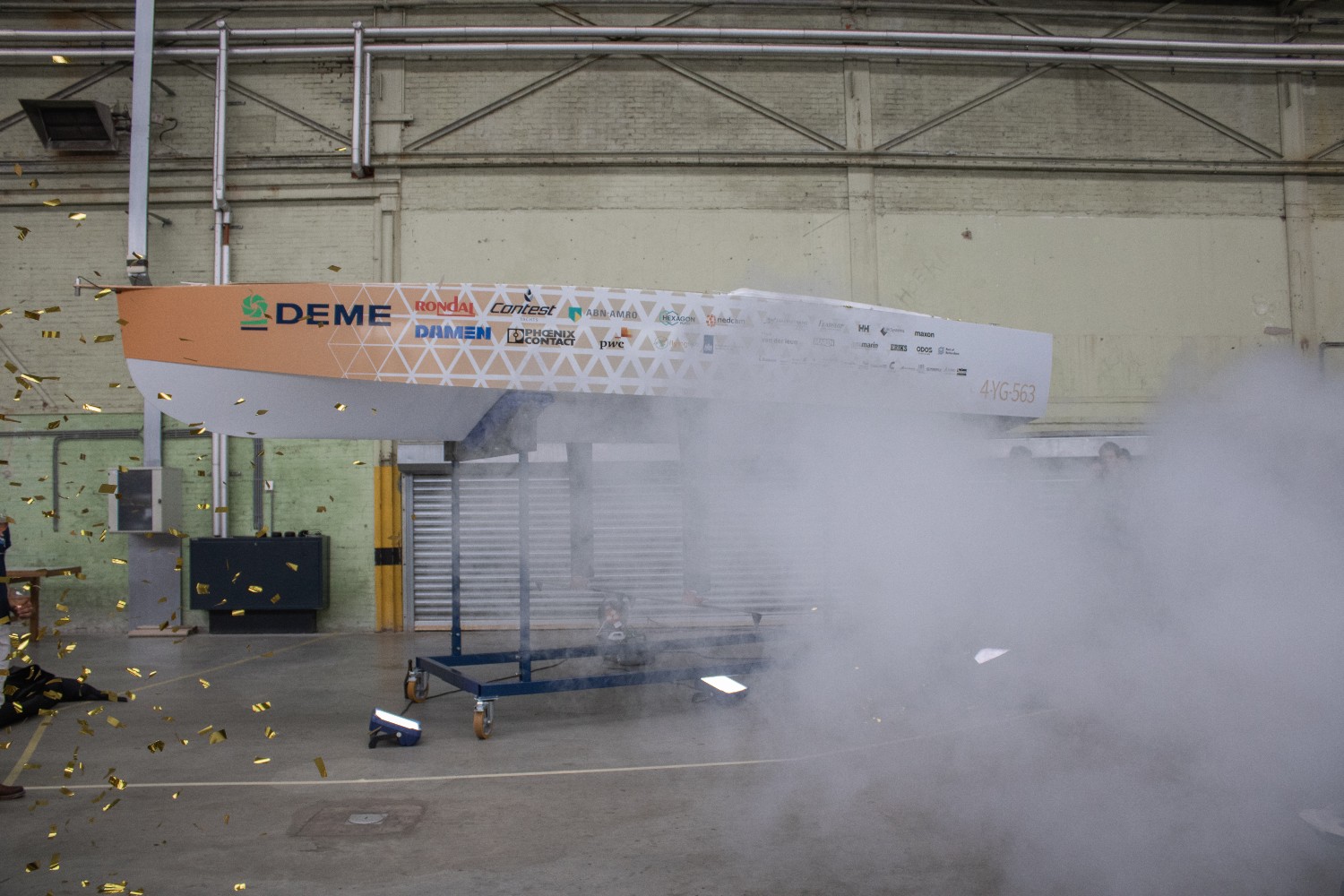A group of students presented their new hydrogen boat at the Submarine Wharf in Rotterdam on Monday. Their goal: to be world champion in the Energy Boat Race in Monaco.
The new hydrogen-powered catamaran as shown at the presentation. (Photo: TU Delft Hydro Motion Team)
The 23-member multidisciplinary Hydro Motion Team has been at it since last August, working hard on the design and construction of the boat. Many have gone before them as TU Delft students have worked on building zero-emission boats since 2005. Until 2020, these sailed on solar energy, and over the last three years on sustainably manufactured hydrogen.
The student team is ambitious in wanting their boat to give the maritime sector a sustainable boost. In the design and construction, the students will get help from sponsors, who in turn hope to benefit from the knowledge and skills of the student team.
Catamaran
Unlike its two predecessors, this year’s boat is a catamaran: a boat with two hulls. The Team’s reasoning is that this should allow the boat to propel itself more lightly and efficiently than last year’s single hull boat. In fact, the first hydrogen boat in 2021 had three hulls because it was modelled on the last solar boat which needed deck space for the solar panels.
Like the previous model, the boat can ‘fly’ thanks to its hydrofoils, which lift it out of the water at speeds exceeding 25 kilometres per hour and drastically reduce the drag. Only the hydrofoils and propeller then remain underwater. New are the ‘winglets’ at the end of the hydrofoils, which further reduce the drag.
Open Sea Class
From 3 to 8 July, the TU Delft students will start in the Open Sea Class, part of the Energy Boat Race in Monaco. Last year, the team came second and was the only hydrogen-powered boat in the field, which consisted mainly of commercial boat builders.
This year, the flying catamaran needs to excel in every way: manoeuvrability, speed and endurance. Whether the opposition will again consist of purely solar boats, or whether the previous TU Delft hydrogen boats inspired more contestants, will be seen after the entry deadline closes.
Do you have a question or comment about this article?
j.w.wassink@tudelft.nl


Comments are closed.